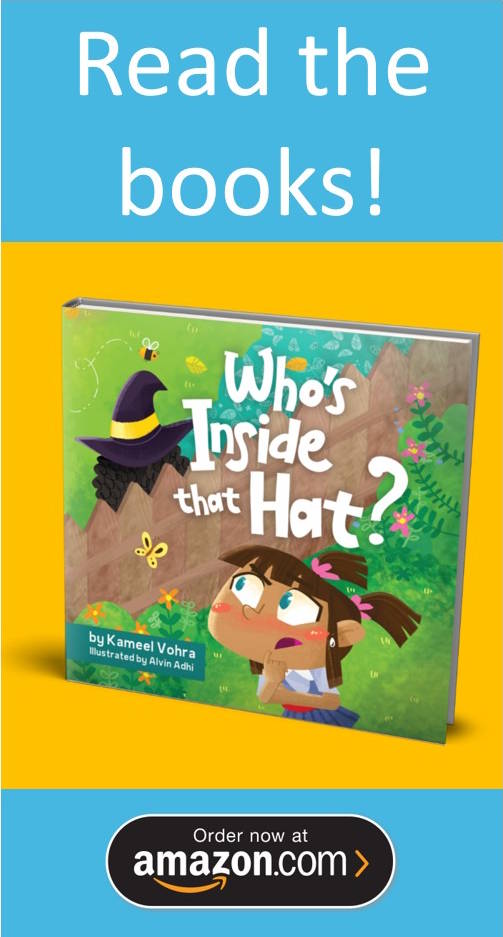Remember how your parents used to tuck you into bed and read stories to you until you were fast asleep? Those moments are more than just opportunities to create magical memories, there are several advantages of telling bedtime stories to your children.
Why are Bedtime Stories Important?
Aside from being a great bonding experience, when you read aloud stories to your kids, you help them to build good reading habits. It also helps develop and improve their language skills, sharpens memory and encourages creative thinking. Whatever their interests might be, there are loads of great short stories you can read to your little ones –helping to further develop their interests and a love for books.
Before we go into how to tell great bedtime stories, let’s have a quick look at why it’s so good for your kids to listen to them.
What Kids Gain From Bedtime Stories
1. Improved reading skills
Several studies have proven that reading aloud to kids every day, promotes growth of organized white matter in the language and literacy section of children’s brains. These are the same areas that are essential for effective learning & education.
If you’d like more details, you could read the studies published by the Reading & Literacy Discovery Center of Cincinnati’s Children’s Hospital, or the study by Hutton, Horowitz-Kraus, DeWitt & Holland (2015) – but suffice to say that there is neurobiological evidence to support that daily reading is very good for your child, and that there are detriments of excessive screen time on brain development.
2. Increased bonding between children and parents
Bedtime stories will help improve bonding with your kids. They recognize that it’s a distraction, gadget & work free moment, when they get true one-on-one time, and they value that. As they wind down and relax for the evening, your kids will become more open to communicating their feelings & problems that might be on their mind. Even if there’s nothing on their mind, you’ll get to see how your child views the world through their reactions and comments.
“If you’re struggling to connect with a child, it actually gives you something in common, either a character or a series you can talk about and research.” – Collet Smart, Psychologist & classroom teacher
3. Building imagination and creativity
Creativity, imagination, divergent thinking, whatever you call it – it’s really good for your child. There is loads of research to support that make-believe is important for kids to develop self-regulation, empathy, and cognitive flexibility. There’s some great research by Berk, Mann & Ogan, (2006) and Hirsh-Pasek, Golinkoff, Berk, & Singer (2009) on this.
How important is creativity & imagination? A study into Nobel Prize winners and MacArthur Foundation “genius” grant awardees, found that most of them played make-believe games & read stories when they were young. There’s research by Root-Bernstein (2012) on this.
Key takeaway? Reading stories aloud to your kids builds their imagination. Helping them imagine different characters, scenes and worlds is important to cultivate their creativity and ability to think innovatively. Reading diverse books helps them develop an inclusive view, by helping them visualize children of color and girl in different roles.
4. Cuddling for improved mental health
The best time for a cuddle is when you’re sitting in bed with your kids. As a parent it feels great, and you know what? Kids love it too. It makes them feel safe & secure, reduces their stress level, and strengthens relationships.

Not that it needs an explanation, every parent knows it’s true, but the science behind it is pretty straight forward. Cuddling and hugging releases oxytocin, the trust and love hormone. It also stimulates particular growth hormones. Making those night time cuddles really good for their mental development & building your relationship.
Let’s have a quick look at how to read a story so that your kids stay captivated…
How to make reading a bedtime story, EPIC!
Parenthood unfortunately doesn’t bestow us with special powers, and not everyone starts out being great at telling stories, but don’t worry – I can confirm (attest to the fact?) that you’ll get better with practice. To help you hold their attention spans for as along as possible, here’s some tips on how to tell a great bedtime story.
1. Pick a story or topic they’re interested in
Pause for a moment, and pick a few stories from your bookshelf that match whatever interests your child has. Are there any characters, topics or genres that he would love to hear about? Remember to think about the endings. Happy endings and uplifting stories are usually best at night time. The fewer characters that get eaten the better! Once you’ve picked a few they might like, let them choose, and don’t worry if it’s the same story every night.
2. An enchanting voice and tone
Sounding enchanting isn’t as difficult as it seems, it just takes a little practice. There are two key things to remember.
First, get the right tone and pace. Kids stories are best told like songs (or rhymes). Vary your tone and pace of the story to keep things melodic and interesting. Nothing is worse than a story told in monotone (“Bla bla bla, the end”) or one that’s rushed through.
Second, use emphasis & pause for added effect and drama. Adding emphasis and pause at different places in your story helps to add suspense & direct kids attention to specific points. It also creates much more vivid mental imagery and interest!
3. Use body language & facial expressions
Remember to show emotion and enthusiasm. Surprise, disdain, fear, shock & horror! Gasp in horror at the right time, recoil in disgust, wave your hands in the air for help, squint & rub your chin to inspect something. Participate in the story as if it’s a (quasi) theatrical play. When they see you’re involved and that you care about the story – they’ll be far more interested.

4. Make funny sounds and voices
Kids love funny sounds and amusing voices. Make the cow go moo, the snake hiss, add an evil cackle to the witch, and make the wind whistle or woosh. There’s no harm in adding fart sound effects (or anything else they find humorous) for added effect. A few well placed sounds will add plenty of color to any story you read aloud.
5. Make it personal and relevant
If a character trips and falls, that’s a good opportunity to pause – and remind them of a time when they fell. Illustrating how components of the story are similar to their own experiences makes the story much more relatable and personal. You can tie almost anything back to their lives, from characters, professions, actions, objects to feelings. That’s something that no YouTube video or recording can ever provide.
6. Ask questions and be interactive
Listening to stories is great, but being engaging with them is even better. By dropping in a few timely questions, bed time stories become more interactive & thought provoking. Simple questions such as “Was that good or bad?”, “What should they have done instead?” or “What do you think will happen now?” will make your story telling much more powerful. Your questions help the story become moral/situational education. Gentle repetition of the same lessons over time is more effective than a long boring parental lecture. Bedtime stories are meant to be fun!
Some children’s stories have questions at the back. Take a minute to skim through them, they’ll give you some quick pointers on things to ask. The questions at the end of the Anika Books are designed in conjunction with educators, they prompt thought and are based on blooms taxonomy to help develop children’s memory, understanding and analysis.
Setting up the right environment
Before you dive into the story, prepare the bed room! Going through the same motions every night signals that it’s time to wind down and helps the children be mentally prepare for the evenings final act. Doing these before you start reading will help.
Every child’s room is different, and you’ll know the motions better anyone else. Draw the curtains, turn on the night light, put the (non-bedtime) toys away, (mostly?) close the door, get tucked under the blanket. Keep the book ready.
If all you have to do is turn off the bed-room light when you’re done, hopefully you’ll have a quicker exit with somewhat less fuss.
Wrapping Up (TLDR)
Bedtime stories are a wonderful way for you to build your relationship with your child, develop their creativity, reduce their stress & build good habits. Not everyone is a natural storyteller, but you’ll get better with practice – and importantly your kids will love your stories however you tell them. You should expect to be rewarded with cuddles, as well as insights into your child’s life that you wouldn’t otherwise get.


